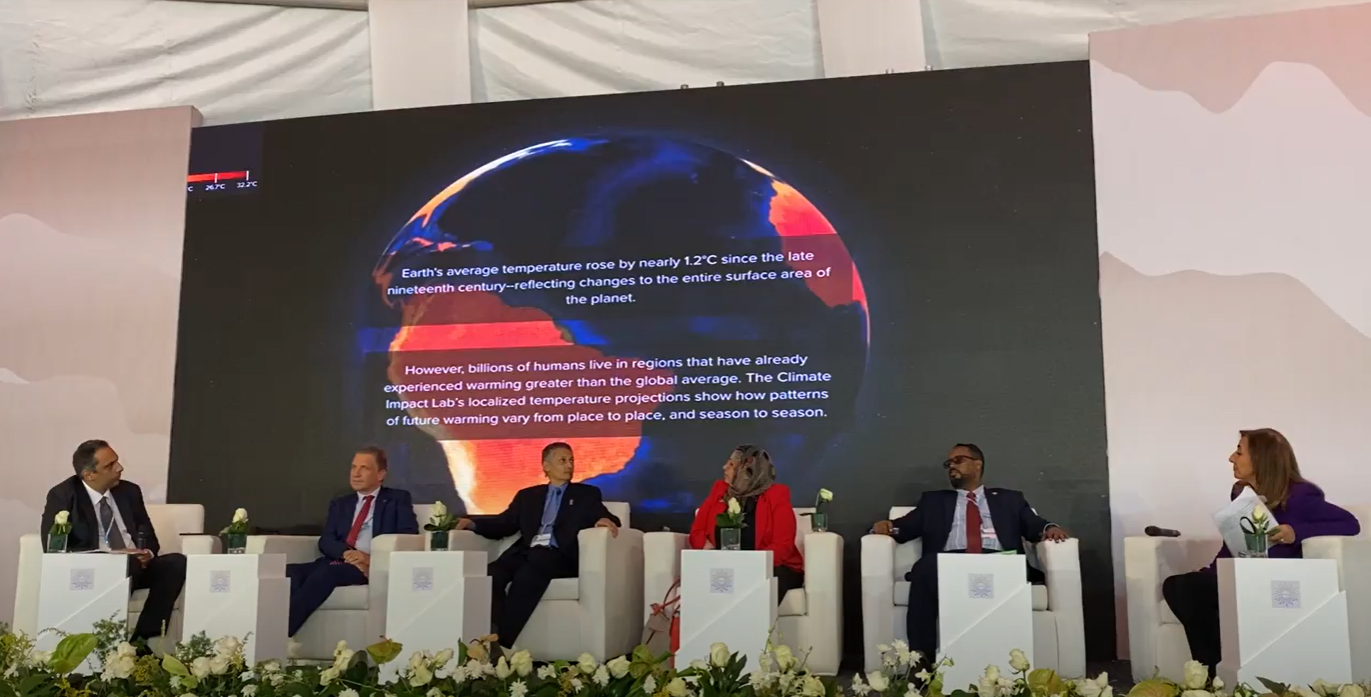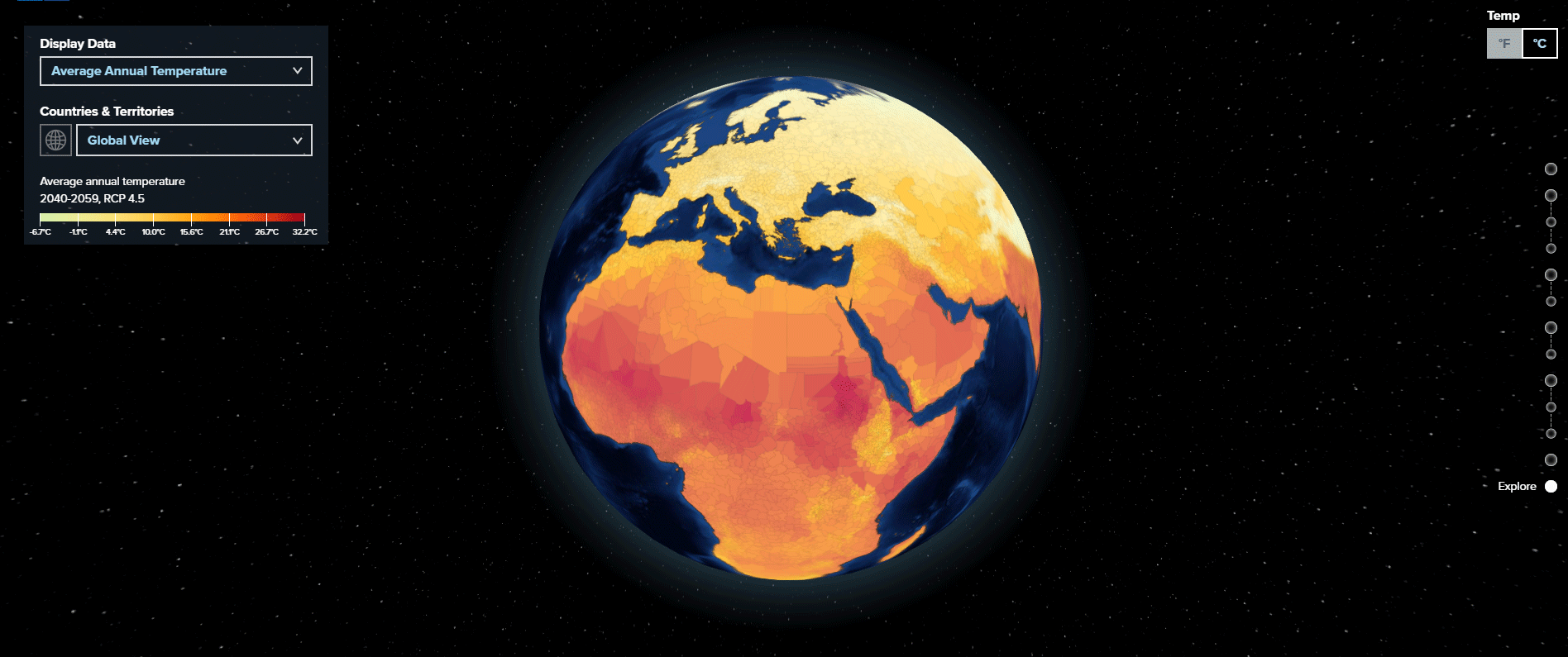
Because developing communities in the global south are likely to be hit the hardest by climate change, the Lab partnered with the United Nations Development Programme (UNDP) to provide knowledge to leaders and residents in these regions with information on how climate change is expected to impact them. Together, the Lab and UNDP developed a web-based Human Climate Horizons data platform that highlights the global inequality by illustrating the effects of climate change on death rates, energy use, labor productivity, and sea level rise at a hyperlocal level for 24,000 regions throughout the world.
Impact
The Human Climate Horizons platform is uniquely positioned to make the Lab’s actionable climate data accessible to decision makers in the developing world. The platform is being featured in UNDP webinars and discussed in key engagements with regional partners and stakeholders throughout the developing world. Moving forward, the platform will scale the Lab’s trailblazing work on the socioeconomic impacts of climate change, providing relevant data to those planning policies and adaptation measures in the poorest economies.
The Lab and UNDP launched the platform on the eve of the COP27 international climate conference and presented it live at a COP27 session titled “Raising Awareness with the Help of Digital Platforms for Climate Change.” By showing that climate impacts will fall disproportionately on the poor, the platform helped to frame the debate over the unequal harms caused by rising global greenhouse gas emissions and highlighted how the choices we make today can shape human development. The following year, at COP28, the Lab and UNDP released new sea level data on the platform and presented it during the conference.
In addition to attracting an audience with key decision makers at COP27 and COP28, the platform has received widespread, international media coverage. This coverage reached more than 326 million people in the week following its launch alone. Coverage included the Financial Times, the Independent, India’s top media outlets the Times of India and the Economic Times, and China’s official state news agency Xinhua, along with more than 200 other outlets from around the world.





